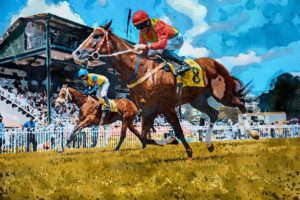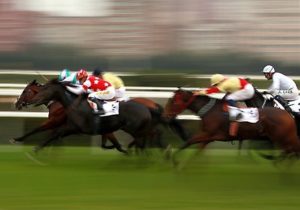How many Classics has Frankie Dettori won?
 At the time of writing, Lanfranco ‘Frankie’ Dettori, 50, has recently demonstrated that he is no back number when it comes to Classic success by riding Mother Earth, trained by Aidan O’Brien, to victory in the 1,000 Guineas at Newmarket. The evergreen Italian veteran had previously won the first fillies’ Classic three times before, but his past victories, on Cape Verdi (1998), Kazzia (2002) and Blue Bunting (2011), all came during his time as a retained jockey for Sheikh Mohammed’s Godolphin operation.
At the time of writing, Lanfranco ‘Frankie’ Dettori, 50, has recently demonstrated that he is no back number when it comes to Classic success by riding Mother Earth, trained by Aidan O’Brien, to victory in the 1,000 Guineas at Newmarket. The evergreen Italian veteran had previously won the first fillies’ Classic three times before, but his past victories, on Cape Verdi (1998), Kazzia (2002) and Blue Bunting (2011), all came during his time as a retained jockey for Sheikh Mohammed’s Godolphin operation.
All told, Dettori has won 20 English Classics, most of them in the iconic royal blue silks of Godolphin. However, after his retainer came to an end in 2013 and he returned from a six-month worldwide ban for failing a drugs test, Dettori worked his way back to the top of his profession in a freelance capacity. In 2015, won his second Derby, on Golden Horn, trained by John Gosden, and the following year his third 2,000 Guineas on Galileo Gold, trained by Hugo Palmer. Since then, Dettori has ridden his fourth and fifth Oaks’ winners, Enable and Anapurna, in 2017 and 2019, respectively, and his sixth St. Leger winner, Logician, in 2019. All three horses were trained by John Gosden.
 A stewards’ enquiry may be called for a variety of reasons, not all of which, necessarily, may have affected the result of the race in question. The purpose of a stewards’ enquiry is to ensure that all races are run fairly, in accordance with the Rules of Racing. A panel of stewards investigates any possible breach(es) of the rules and, having heard evidence from jockeys, trainers, stable staff and other interested parties, makes a joint decision on what action to take, if any. In most cases, a stewards’ enquiry is completed, and its outcome is announced to the public, before the start of the next race.
A stewards’ enquiry may be called for a variety of reasons, not all of which, necessarily, may have affected the result of the race in question. The purpose of a stewards’ enquiry is to ensure that all races are run fairly, in accordance with the Rules of Racing. A panel of stewards investigates any possible breach(es) of the rules and, having heard evidence from jockeys, trainers, stable staff and other interested parties, makes a joint decision on what action to take, if any. In most cases, a stewards’ enquiry is completed, and its outcome is announced to the public, before the start of the next race.